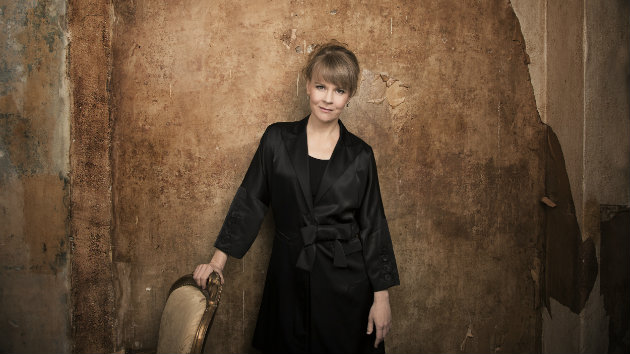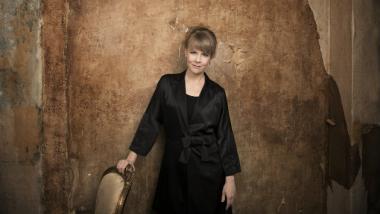
It’s rare to leave a San Francisco Symphony concert without having heard a work from Germany, Russia, or France; but the Thursday, Oct. 22, concert, led by guest conductor Susanna Mälkki, highlighted Finland in a refreshing departure from the routine. Mälkki, who will act as chief conductor of the Helsinki Philharmonic Orchestra starting in the 2016–17 season, first conducted the San Francisco Symphony in 2012, returning both in 2014 and earlier this month. Thursday’s program included the first S.F. Symphony performance of Alma III: Soma (1998) by Finnish composer Jukka Tiensuu, in addition to Sibelius’s Fifth Symphony and Chopin’s Piano Concerto No. 1, with soloist Simon Trpčeski.
Digital technology is integral to Tiensuu’s compositions, but as a harpsichordist, his repertoire reaches back to the Renaissance. “Soma” calls for a MIDI keyboard that controls a sampler, yet Tiensuu indicates that no volume or sustain pedals should be used — “Dynamics by fingers only!” This interplay between technology and tradition coalesces in a rich palette of microtones, glissandi and pitch bending, harmonics, and tubular bells. A recurring triplet motif, which Tiensuu overlaps in a kaleidoscopic fashion, gives the piece its underlying organization.
Tiensuu, a fine composer who is little known in the United States, does not provide program notes, preferring to let listeners develop their own interpretations of his works. In some places it recalls Stravinsky, but more than adhering to any particular style, “Soma” sounds energetic and youthful (though Tiensuu was 50 when it premiered). This magnetic concert opener feels shorter than its nine minutes, and the San Francisco Symphony would do well to program the rest of Alma, or one of Tiensuu’s many other orchestral works. Although the percussion and brass sections sometimes overpowered the others the solo string passages came out beautifully.
Mälkki’s conducting style, which is generally more efficient than expressive, proved appropriate for this first San Francisco Symphony performance. Although the percussion and brass sections sometimes overpowered the others the solo string passages came out beautifully.
Mälkki’s strong direction resulted in a nuanced and exciting performance of Sibelius’ Fifth Symphony, a piece that, though pleasant, can easily pass by without having made a lasting impression. After some initial patchiness in the wind entrances, the first movement became tightly controlled in both rhythm and color. A simple elegance characterized the second movement, whose quirky and inconclusive ending Mälkki navigated with seeming ease. The brass section played the third movement’s famous swan motif with a grace that compensated for the raggedy final chords.
Macedonian pianist Simon Trpčeski is one of the most likeable touring artists around, a devoted educator who, in a masterclass for local teenage pianists this week, went an hour over his allotted time. On this trip ,Trpčeski also spoke persuasively to the San Francisco Chronicle about the importance of good taste, criticizing artistic decisions made for the sole purpose of differentiating oneself from other performers. But Trpčeski’s interpretation of Chopin’s Piano Concerto No. 1 went too far in its pursuit of artistic integrity: There was nothing exciting, let alone unique, about the performance.
Trpčeski, who often plays Macedonian folk music for encores, was at his most interesting in the finale, a rondo imbued with characteristics of the krakowiak (a Polish syncopated dance). His characterizations of the first two movements, however, were weak. Trpčeski developed each line to its logical conclusion, predictably emphasized the right-hand melodies and took few liberties with the time. It was the kind of performance a teacher might recommend to a student learning a new work: a sensible reading not linked to any stylistic school, an interpretation that listeners would hardly rate among their favorites. Surprisingly, in a concerto whose orchestral writing isn’t particularly distinctive, the orchestra stole the show.

